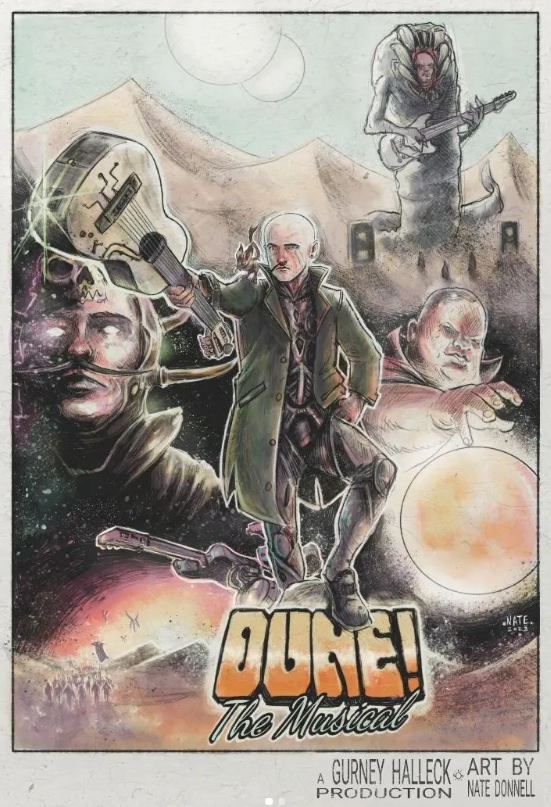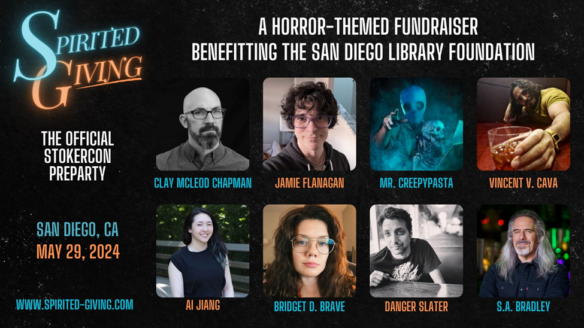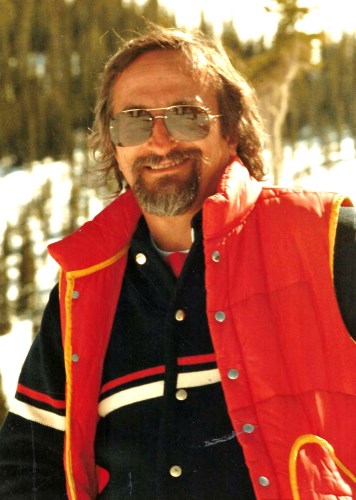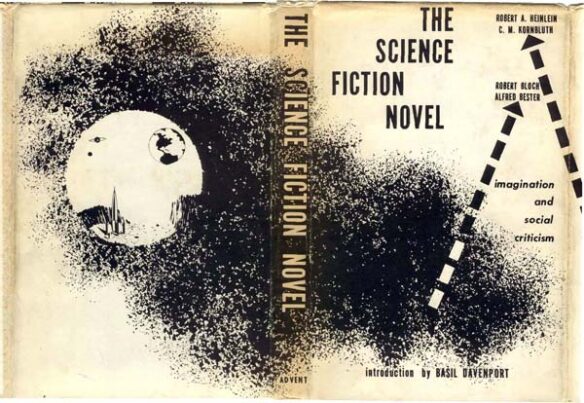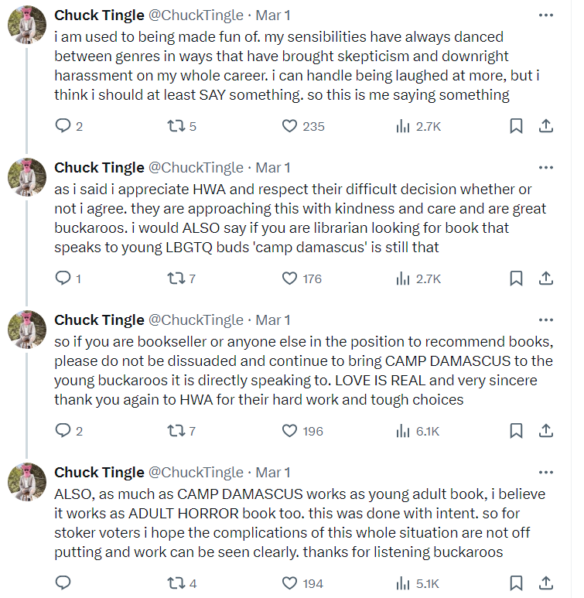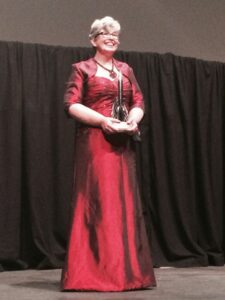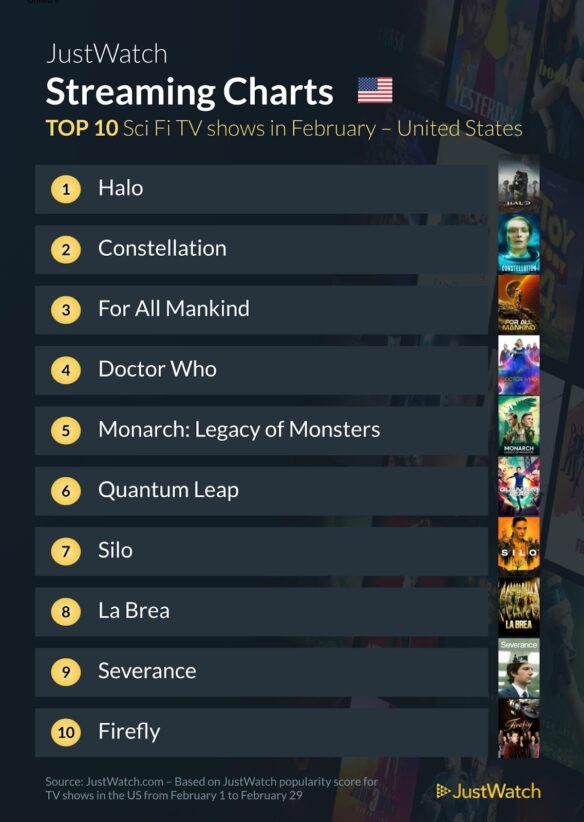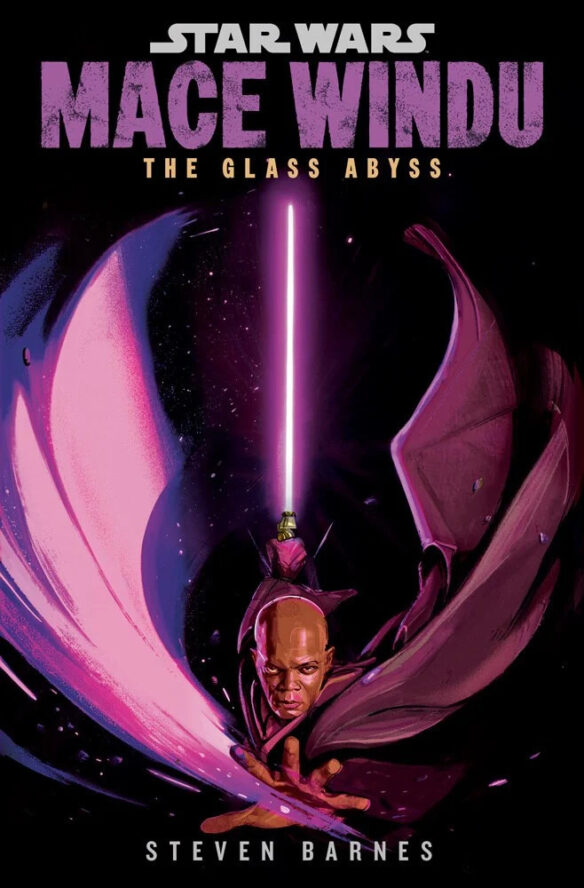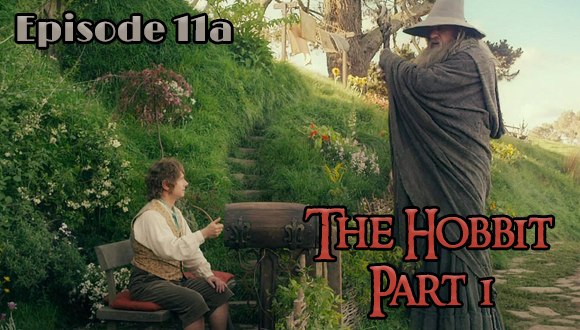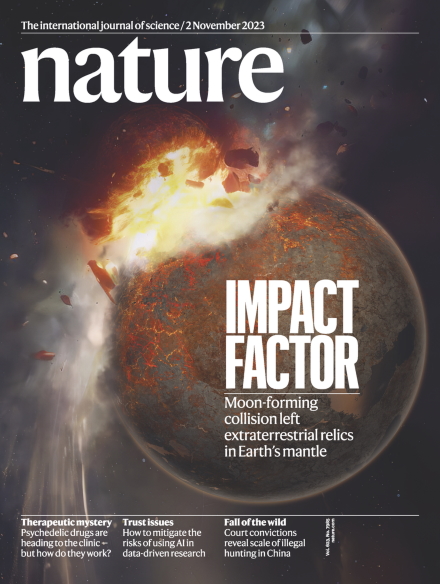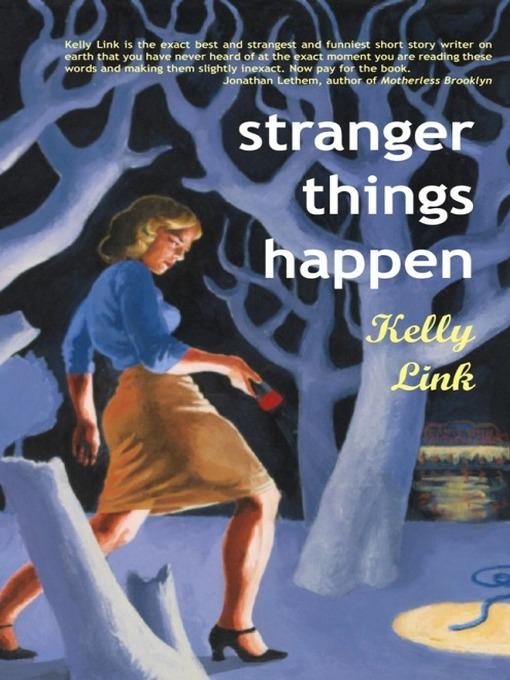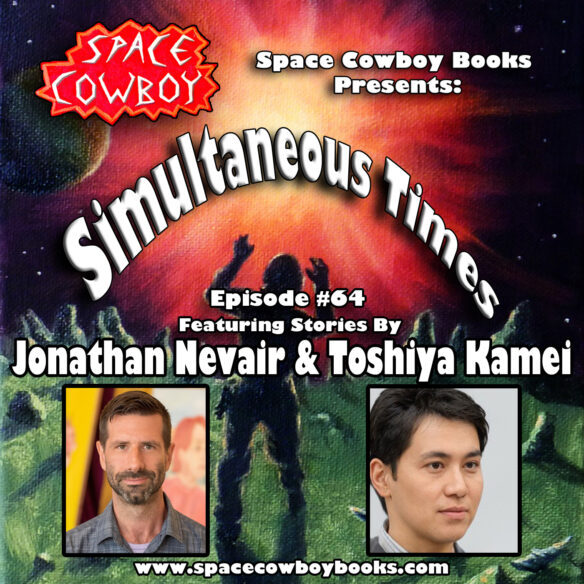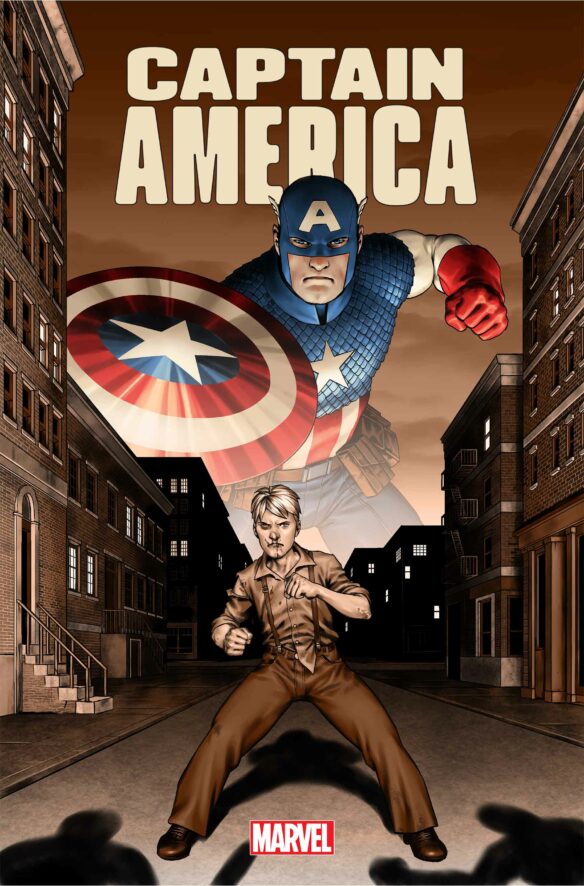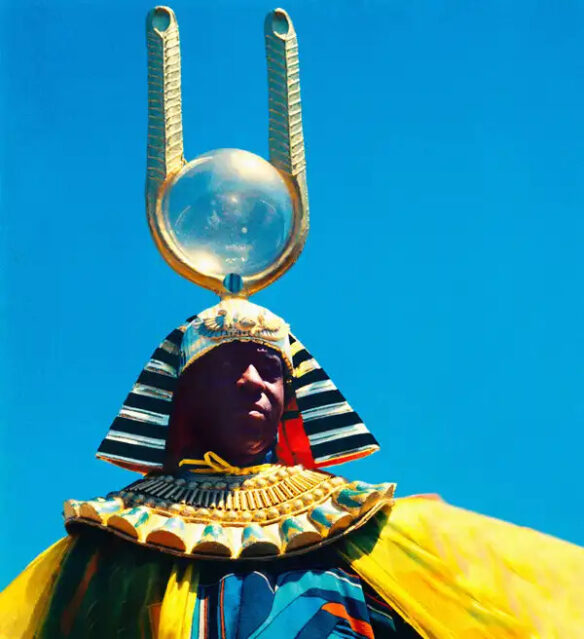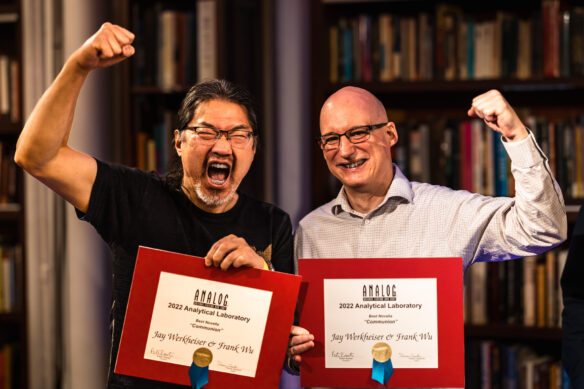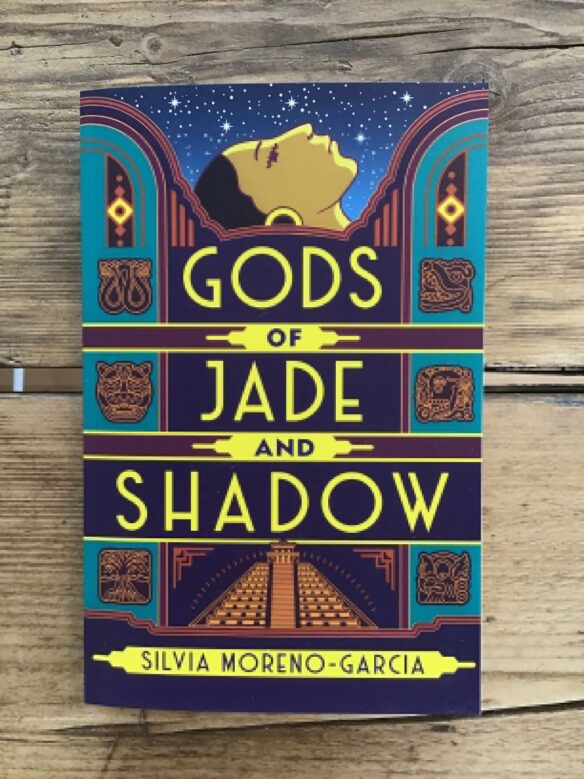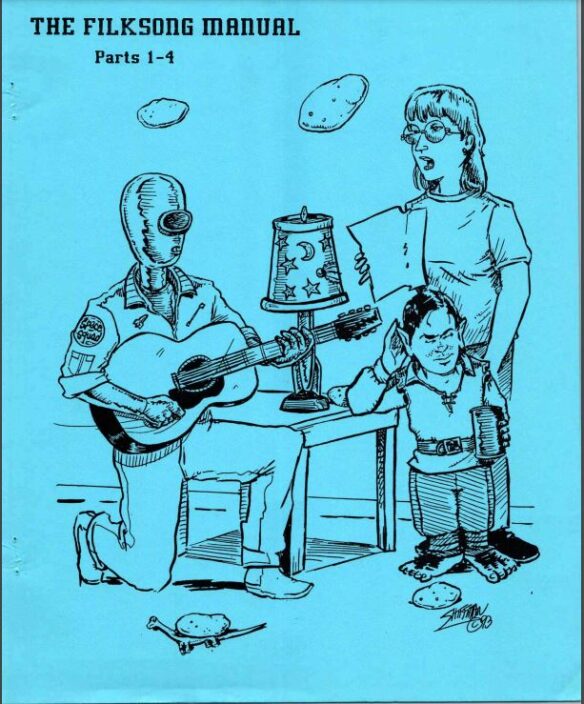(1) 2024 WORLD FANTASY AWARDS NOMINATIONS DEADLINE ALMOST HERE. Members of the 2022, 2023, and 2024 World Fantasy Cons have until Friday, May 31 to nominate material for the 2024 World Fantasy AwardsSM. Five nominees will be selected in each category. Three of those are selected by a panel of judges, and two will be chosen by popular vote of World Fantasy Convention members from 2022, 2023, and 2024. Eligible works will have a 2023 publication date. See full instructions at the link.
The World Fantasy AwardsSM recognize the best in fantasy fiction published during the previous calendar year, and also honor those individuals who have made exceptional contributions to the fantasy and horror genres during that same time period. The awards are given each year at the annual World Fantasy Convention. They were first given in 1975, at the organization’s initial gathering. This year marks the 50th World Fantasy Convention, which will be held October 17-20 in Niagara Falls, New York. The World Fantasy AwardsSM will be presented at a banquet on Sunday, October 20th at the conclusion of the convention.
For information or to register for this year’s World Fantasy Convention in Niagara Falls, visit the convention website.

(2) SFF AUTHOR ON JEOPARDY! Writer Ellen Klages appeared as a contestant on tonight’s aired episode of Jeopardy! Screencap courtesy of Steven H Silver. As Lenore Jean Jones described her attire, “She’s wearing a cool overshirt covered with space designs.” How did she do? We’ll report that tomorrow, since this Scroll will post before the show airs on the West Coast.

(3) TUNES FOR GAIMAN BOOK. The Guardian foreshadows that “Neil Gaiman’s Coraline to become ‘dark, spangly’ stage musical”.
Neil Gaiman’s award-winning novella Coraline is to be turned into a musical that will tour the UK in 2025. The children’s fable, which found a new audience 15 years ago as a stop-motion animation by Henry Selick, has been adapted by playwright Zinnie Harris and composer Louis Barabbas….
[Director Brining] said this is what prompted them to collaborate with Barabbas: “His music has got a gothic quality. It’s got creepiness and wit, he can write lyrics that hold rich imagery and themes that respond to the novel. The gothic is a key characteristic of Gaiman’s work and the music will help define that atmosphere on stage.”…
(4) NOT WHERE YOU’D EXPECT. The Ozarks at Large program on NPR affiliate KUAF in Fayetteville, Arkansas recently devoted a segment to “Books from this year’s Hugo Awards”. The guest was Pastor Clint Schnekloth, whose DisCon III report we linked to in a 2021 Pixel Scroll. And he is remarkably well-informed.
Pastor Clint Schnekloth of Good Shepherd of the Ozarks joins Ozarks at Large’s Kyle Kellams to discuss another round of books. This week, they talk about the 2024 Hugo Awards and the controversy that plagued last year’s contest.
(5) MEMORY LANE.
[Written by Cat Eldridge.]
May 22, 1981 — Anniversary of the release of Outland.
I decided to do something different today which is look at a film which was released to today that got a Hugo nomination, that being Outland and the nomination being at Chicon IV. Unfortunately that was the year that Raiders of the Lost Ark was on the ballot…
Outland premiered forty-three years ago this date in the States in select cities, but everywhere that following weekend.
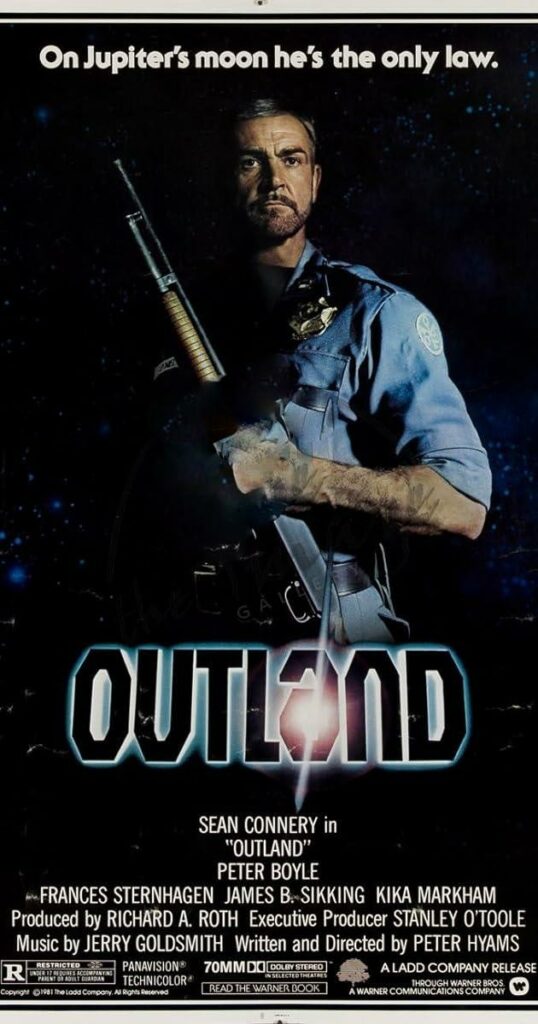
Now let’s go back to the creation of this film. This original title of the film was Io as it’s set on Jupiter’s moon Io, but audience testing showed that wasn’t an understandable at all so test audiences thought it was the number ten, or, at least to me quite puzzlingly, low. So in homage to the Western genre, it became Outland.
Which was appropriate as the writer Peter Hyams wanted to do one: “I wanted to do a Western. Everybody said, ‘You can’t do a Western; Westerns are dead; nobody will do a Western’. I remember thinking it was weird that this genre that had endured for so long was just gone. But then I woke up and came to the conclusion – obviously after other people – that it was actually alive and well, but in outer space.”
So they had a script that they really liked, now they need their actor. They wanted and got Sean Connery to be in their version in High Noon. Connery’s career had been in a nose dive as of late then, so this was a golden chance for him, so he took the role.
Law enforcement officers are faced with the nature of right and wrong, and duty versus keeping themselves safe, but while Will Kane in High Noon is played as an archetypal hero who discovers the world isn’t black and white as he was led to believe, Will O’Niel already exists firmly in the gray where things are always messy when we meet him.
Connery was magnificent in this role. In addition to Sean Connery, the movie includes performances by Peter Boyle, Frances Sternhagen, and James Sikking, who deliver memorable portrayals of complex characters.
So they’ve got the lead and the rest of an excellent core cast, now they had to film a movie. They had a very tight budget, just seventeen million dollars. The quite amazing sets were enhanced by the use of a new filming process called Introvision which allowed the director to mix a combination of sets, mattes and a generous use of miniatures in-camera, avoiding the then-lengthy process of extensive use with green screen.
Critics were mixed on it. Gary Arnold at the Washington Post thought it was “trite and dinky” whereas Desmond Ryan at the Philadelphia Inquirer called it: “A brilliant sci-fi Western.”
I said it cost seventeen million to make, and it made, errr, just about seventeen million dollars. That likely means that it actually lost money for the studio. Not that the studio would admit that.
Now I liked the film. I saw it on some theater screen not long after it came out and thought it worked rather well, but then I think it is police drama rather than a SF film.
(6) COMICS SECTION.
- Saturday Morning Breakfast Cereal breaks down what is and isn’t a myth.
- Close to Home witnesses a waiter’s gaffe.
(7) DO YOU ACCEPT THE CHALLENGE? GiantFreakinRobot asks “Can You Name Every Film In The Ultimate Sci-Fi Movie Supercut?” P.S. The video was released in 2012, so it’s missing references to a bunch of films you might expect to see included.
When it comes to sci-fi fandom, everyone wants to think they are the consummate expert on the subject, all-knowing and all-powerful in this movie universe. And many of you probably are. You are reading this article after all, one that posed something of a challenge at the jump.
Well, there is one movie fan out there that wants to challenge your fandom and expertise in the best possible way. That’s by putting a ton of movies together in one awesome sci-fi supercut to see if you can name them all. It’s six-plus minutes of greatness, with some of the most iconic scenes from some of the biggest franchises.
(8) LOSING FAITH. In “Buffy The Vampire Slayer Fans Still Think About This ‘What-If’”, CBR.com wiles away the hours with a thought experiment.
In a series with as many moving parts as Buffy the Vampire Slayer, changing the outcome of any major event has massive repercussions on everything that comes afterward. Of all the Buffy “What ifs?” few are as tantalizing as the notion of “What if Faith never turned evil?” Faith Lehane, the fan-favorite hero turned villain turned anti-hero, is among the most powerful and dynamic characters in the series, and her continued presence in the main cast beyond Season 3 would change the way the story played out.
Nothing about Buffy the Vampire Slayer would be the same if Faith had remained with the Scoobies instead of joining forces with Mayor Richard Wilkins III. With two united Slayers growing stronger together, and able to support each other, the forces of good would be stronger than ever, and the chaotic presence of Faith would shift the group dynamic among the heroes. With additional information gained about the characters post-series, it’s even possible that Buffy’s romantic life would take a sharp turn….
(9) SCROLL SING-ALONG. Meanwhile, another great piece of literature tickled someone’s muse today. Applause to Randall M. for his File 770-inspired filk, posted in comments.
Everybody’s talkin’ bout free speech
Out in the public square,
But when the Pixel Scroll gets here
Everybody’s gonna comment there.Come all who file,
Come all who lol
You’ll not see nothing like the Pixel Scroll…
(10) WHAT TRICK-OR-TREATERS CAN EXPECT. Get a Halloween head start at Food and Wine. “Mars Wrigley Reveals Its Halloween 2024 Candy Lineup”.
…That lineup includes the brand-new M&M’s Milk Chocolate Pumpkin Pie, which is set to hit store shelves soon to give people a taste of the “sweater weather” to come. The company is also bringing back fan favorites like Twix Ghoulish Green, M&M’s Ghouls in Milk Chocolate, and Snickers Pumpkins, which are also coming with a brand-new look. And it also announced it’s expanding its variety bag offerings this year, going “even bigger with its blends of fruity and chocolate candies to meet shifting consumer preferences.”…

(11) FIRST AMERICAN BOARD GAME. Smithsonian Magazine studies “What America’s First Board Game Tells Us About the Aspirations of a Young Nation”.
…As I sat in that archive… I beheld another first in American printing: a board game called the Travelers’ Tour Through the United States.
This forgotten game, printed in 1822, the year after Missouri became a state, has a lot to say about America’s nascent board game industry, as well as how the young country saw itself….
…Since the Travelers’ Tour was the first board game to employ a map of the U.S., it might have been an especially interesting gift for American consumers.
It’s difficult, however, to gauge just how popular the Travelers’ Tour was in its time. No sales records are known to exist, and since so few copies remain, it likely wasn’t a big seller.
A global database of library holdings shows only a few copies of the Travelers’ Tour in institutions around the U.S. And while a handful of additional copies are housed in museums and private archives, the game is certainly a rarity.
Teetotums and travelers
Announcing itself as a “pleasing and instructive pastime,” the Travelers’ Tour consists of a hand-colored map of the then-24 states and a numbered list of 139 towns and cities, ranging from New York City to New Madrid, Missouri. Beside each number is the name and description of the corresponding town.
Using a variant spelling for the device, the instructions stipulate that the game should be “performed with a Tetotum.” Small top-like devices with numbers around their sides, teetotums functioned as alternatives to dice, which were associated with immoral games of chance.
Once spun, the teetotum landed with a random side up, revealing a number. The player looked ahead that number of spaces on the map. If they could recite from memory the name of the town or city, they moved their token, or traveler, to that space. Whoever got to New Orleans first won….

(12) BAD TIME TO BE A THRIP. “Sticky trick: new glue spray kills plant pests without chemicals” – the Guardian tells how it works.
Tiny sticky droplets sprayed on crops to trap pests could be a green alternative to chemical pesticides, research has shown.
The insect glue, produced from edible oils, was inspired by plants such as sundews that use the strategy to capture their prey. A key advantage of physical pesticides over toxic pesticides is that pests are highly unlikely to evolve resistance, as this would require them to develop much larger and stronger bodies, while bigger beneficial insects, like bees, are not trapped by the drops.
Pests destroy large amounts of food and chemical pesticide use has risen by 50% in the past three decades, as the growing global population demands more food. But increasing evidence of great harm to nature and wildlife, and sometimes humans, has led to a rising number of pesticides being banned.
Some farmers already use alternatives to chemical pesticides, such as introducing other insects that kill the pests, but the new sticky drops are thought to be the first such biodegradable pesticide to be demonstrated.
The drops were tested on the western flower thrip, which are known to attack more than 500 species of vegetable, fruit and ornamental crops. More than 60% of the thrips were captured within the two days of the test, and the drops remained sticky for weeks.
Work on the sticky pesticide is continuing, but Dr Thomas Kodger at Wageningen University & Research, in the Netherlands, who is part of the self defence project doing the work, said: “We hope it will have not nearly as disastrous side-effects on the local environment or on accidental poisonings of humans. And the alternatives are much worse, which are potential starvation due to crop loss or the overuse of chemical pesticides, which are a known hazard.”
The research, published in the journal Proceedings of the National Academy of Sciences, took an edible plant oil and oxidised it to make it as sticky as duct tape, a process similar to deep frying. The oil was then blitzed in a “glorified blender” along with water and a little soap to stop the droplets sticking together.
This solution was then sprayed on to the leaves of chrysanthemum plants, the thrips’ favourite food and a huge commercial crop in the Netherlands. It was also tested on strawberries. The sprayers used are the same design as those already used by farmers and field trials this summer will test the process at scale.
Fly paper already exists but obviously cannot be sprayed and Kodger said: “Fly traps are extremely effective against pests but they’re also extremely effective against pollinators.” He said bees were too big and strong to get stuck in the millimetre-size drops.
(13) VIDEO OF THE DAY. [Item by SF Concatenation’s Jonathan Cowie.] Physicist Matt O’Dowd over at PBS Space Time takes a look at interstellar travel without Faster Than Light (FTL).
FTL is a common SF trope as it gets around plot difficulties of having protagonists travel vast distances over many lifetimes. However, there is an SF trope that is fairly commonly used that does not require FTL for interstellar travel and that is that of the generation ship…
Matt takes a deep dive…
“In the far future we may have advanced propulsion technologies like matter-antimatter engines and compact fusion drives that allow humans to travel to other stars on timescales shorter than their own lives. But what if those technologies never materialize? Are we imprisoned by the vastness of space—doomed to remain in the solar system of our origin? Perhaps not. A possible path to a contemporary cosmic dream may just be to build a ship which can support human life for several generations; a so-called generation ship.”
[Thanks to Teddy Harvia, Kathy Sullivan, Mike Kennedy, Steven H Silver, Lenore Jean Jones, Lise Andreasen, Andrew Porter, John King Tarpinian, Chris Barkley, Cat Eldridge, SF Concatenation’s Jonathan Cowie, and Steven French for some of these stories. Title credit belongs to File 770 contributing editor of the day Cat Eldridge.]





